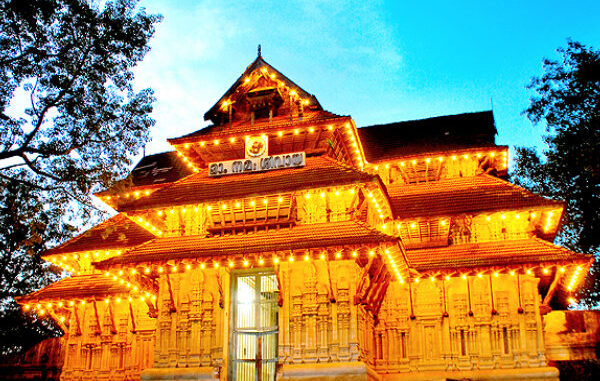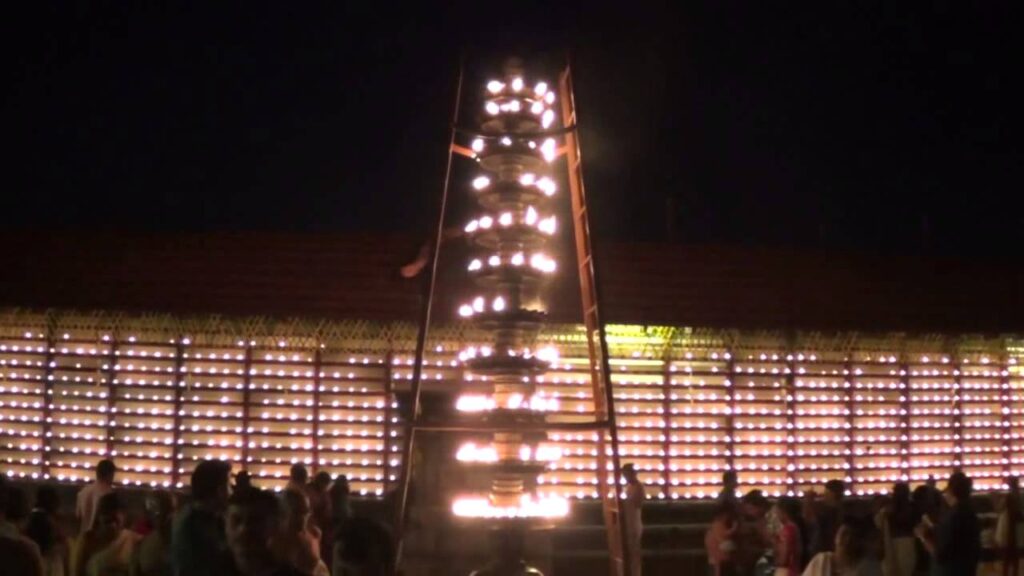
The Vadakkunnathan temple is one of the most popular temples in Kerala. Its the symbol of Thrissur city, the cultural capital of Kerala. The temple is located right in Ground zero of the city as it’s around this temple, the city grew in a circular pattern. It is also interesting to know that Thrissur gets its name from this temple. Thrissur is a shortened form of ‘Thrissivaperur’ which means ‘The town with the name of Lord Shiva’. According to Keraliya Shankaravijaya, Adi Sankara attained Videha Mukti at the Vadakkunnathan temple. Its one of the few temples that maintained the original architecture which has a history of nearly 700 years with a base structure that dates back to 1200 years.
The original paintings over the base structure that dates back to 1000 years old were restored using the old painting techniques by extracting dyes from plants, vegetables and mixing as per the way it was done a millennium back and redrawn over the remains of old murals in the same way, thus restoring back with extraordinary precision. For this extremely tedious and time-consuming technique of restoring ancient works, UNESCO honored the temple with its prestigious Asia-Pacific Heritage Award for Cultural Heritage Conservation. As a concept, Vadakkunnathan means ‘Lord of North’ (Vadakku- North; Nathan- Lord). This temple doesn’t have any sort of Abishekam for the deity other than Ghee Abishekam. One can’t see the main Shiva Linga as its covered by a mountain of ghee which has been poured over it for the last 7 centuries. The ghee mountain represents Mount Kailash as it’s in white color. The interesting part is that this ghee never melts (despite of several oil lamps around it) nor emits any foul smell. The tradition of ghee pouring continues even today. During Shivaratri, the temple is lit up with 100,000 (one lakh) lamps. This is known as “Lakshadeepam” which is a major offering during Shivaratri.

The origins of the Vadakkunnathan Temple are briefly narrated in the Brahma Purana and says that the temple was founded by Parasurama. According to lore, Parasurama exterminated Kshatriyas in twenty-one cycles. In order to cleanse himself of the negative karma of these deeds he performed a Yajnya at the end of which he gave away all the land to Brahmins as Daakshina. He wanted to retire to a new land to
perform meditative penance (Tapasya) and thus requested the Lord of the oceans Varuna to bring forth a new piece of land from the waters. According to some other accounts, Varuna asked Parasurama to hurl his axe into the sea. Parasurama now wanted to consecrate this new land that arose from the sea. So he went to Mount Kailasa to his guru, Lord Shiva and requested him to take abode in Kerala and thereby bless the region.
Lord Shiva accompanied by his wife Parvati, his sons Ganesha and Subrahmanya went along with Parasurama, to oblige his disciple. Shiva stopped at a spot, which is now Thrissur, for his seat. Later he and his party disappeared and Parasurama saw a bright and radiant Shiva lingam at the foot of a huge banyan tree. This place where Shiva manifested his presence as a lingam is known as the Sri Mula Sthana.
The Thrissur Pooram is an annual temple festival held in Thrissur, Kerala, India. It is held at the Vadakkunnathan (Shiva) Temple in Thrissur every year on the Pooram day – the day when the moon rises with the Pooram star in the Malayalam Calendar month of Medam. It is the largest and most famous of all poorams in India. The pooram has a good collection of elephants (more than 50) decorated with nettipattam (decorative golden headdress), strikingly crafted Kolam, decorative bells, and ornaments. This year Maha Shivaratri will be celebrated on 1st March 2022.
Yoga Vidya Gurukulam wishes everyone a very happy and Divine Maha Shivaratri.